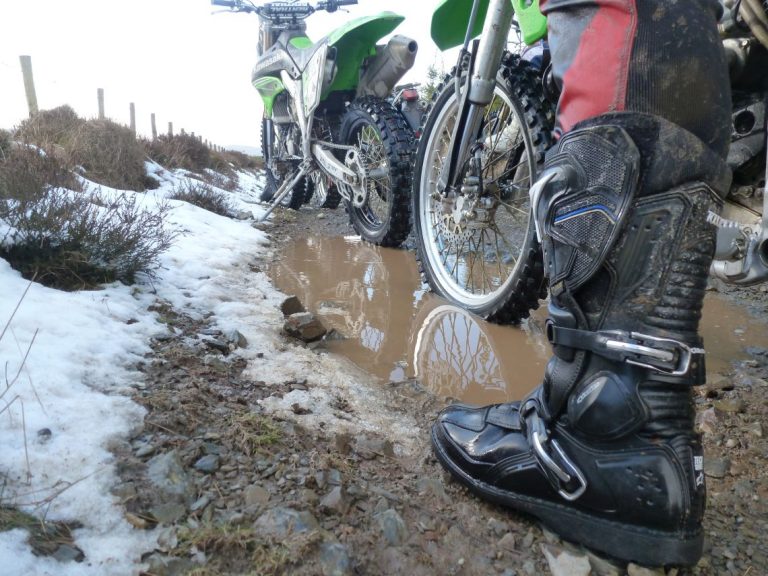Pain in your Achilles Tendon can lead to a miserable time in the saddle, especially if you’re heading off-road. Here, Suzie Bostock explains how you can ensure effective recovery from this ailment.
Your Achilles is the thickest tendon in your body and you use it every day, especially when riding and standing up on the pegs etc. Achilles tendinopathy (injury to the band of tissue that runs down the back of your lower leg to your heel) is a common issue associated with this tendon.
In this article, we’ll focus on ‘mid-portion’ Achilles tendinopathy. This will typically be when the pain is between two to six centimetres above where the tendon inserts onto the heel and is the most common form of Achilles Tendinopathy.
Many motorcyclists, especially those that ride off-road, can suffer from this condition due to the constant standing up and bouncing on their feet, even more so if they have poor quality boots. It starts slowly but soon becomes a huge issue and can make your life on two wheels a miserable one.
With this in mind, it’s important to know how to manage the pain, and also how to get yourself back to riding fitness as effectively as possible.
First things first, nonsteroidal anti-inflammatory drugs (e.g. ibuprofen) and ice can be useful here, especially in the early stages when pain is higher. Relying on these isn’t ideal though, and you want to aim to reduce your use of them, mainly because it can inhibit your rehabilitation.
Like anything, there is no one size fits all recipe for these things, however, I have put together some exercises using the latest evidence to help you recover if you suffer from Achilles tendinopathy. You have to load tendons for them to improve… doing nothing won’t work!
As a general guide, pain during/after the exercise should not exceed a 5/10 on the pain scale (where 0 is no pain and 10 is worst pain imaginable).
If you like to ride off-road, you don’t necessarily have to stop, but only ride at your ‘happy’ pace and not into pain, e.g. if you normally ride for five or six hours and it hurts for two to three days after and causes you to limp, try reducing your time in the saddle to one to two hours and see how you feel. If this is ok, start there and build up.
Exercises
Exercise One (Irritable tendinopathy/sedentary people) – perform daily.
Stand on the floor and raise up onto your tip-toes slowly and then slowly lower. Use your ‘good’ leg more if it’s too uncomfortable. Complete 8 to 12 repetitions, three times a day (5-6 hours in between).
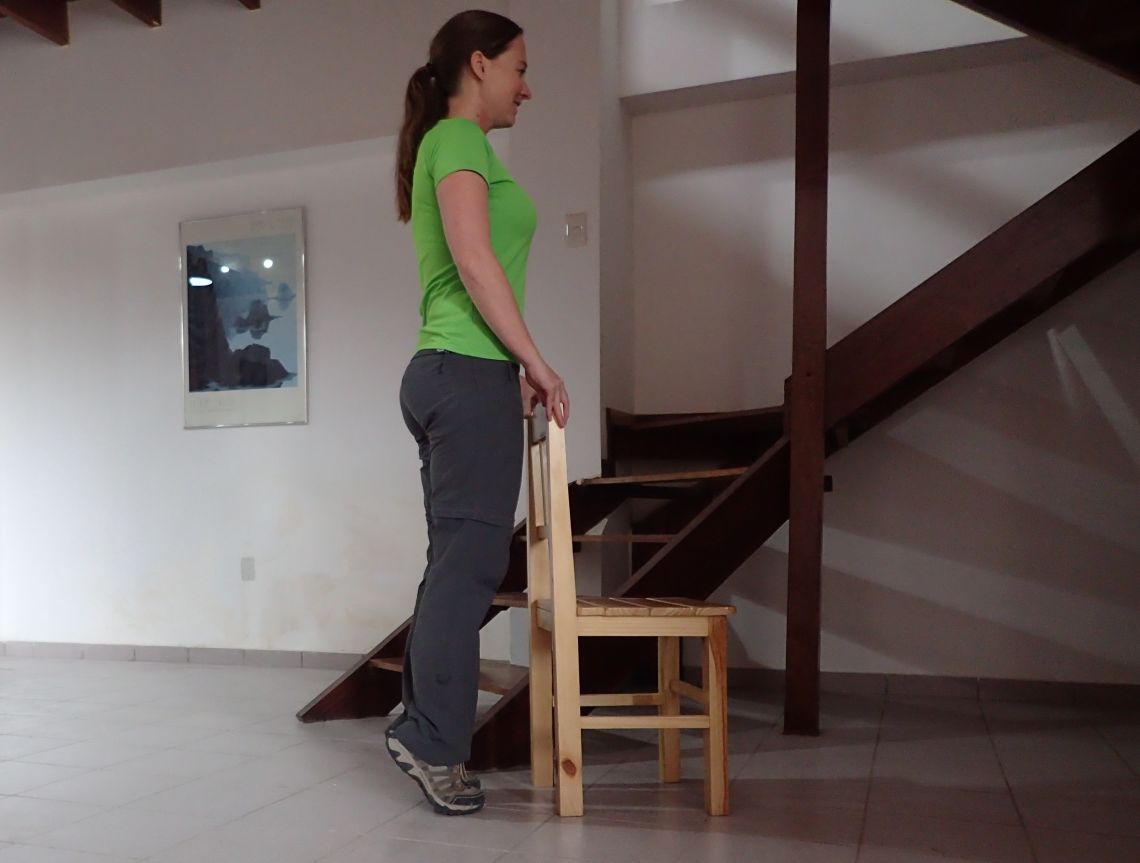
Once this is ok, do this just on your ‘bad’ leg using the kitchen counter or similar to support you until you find you do not need it any more.
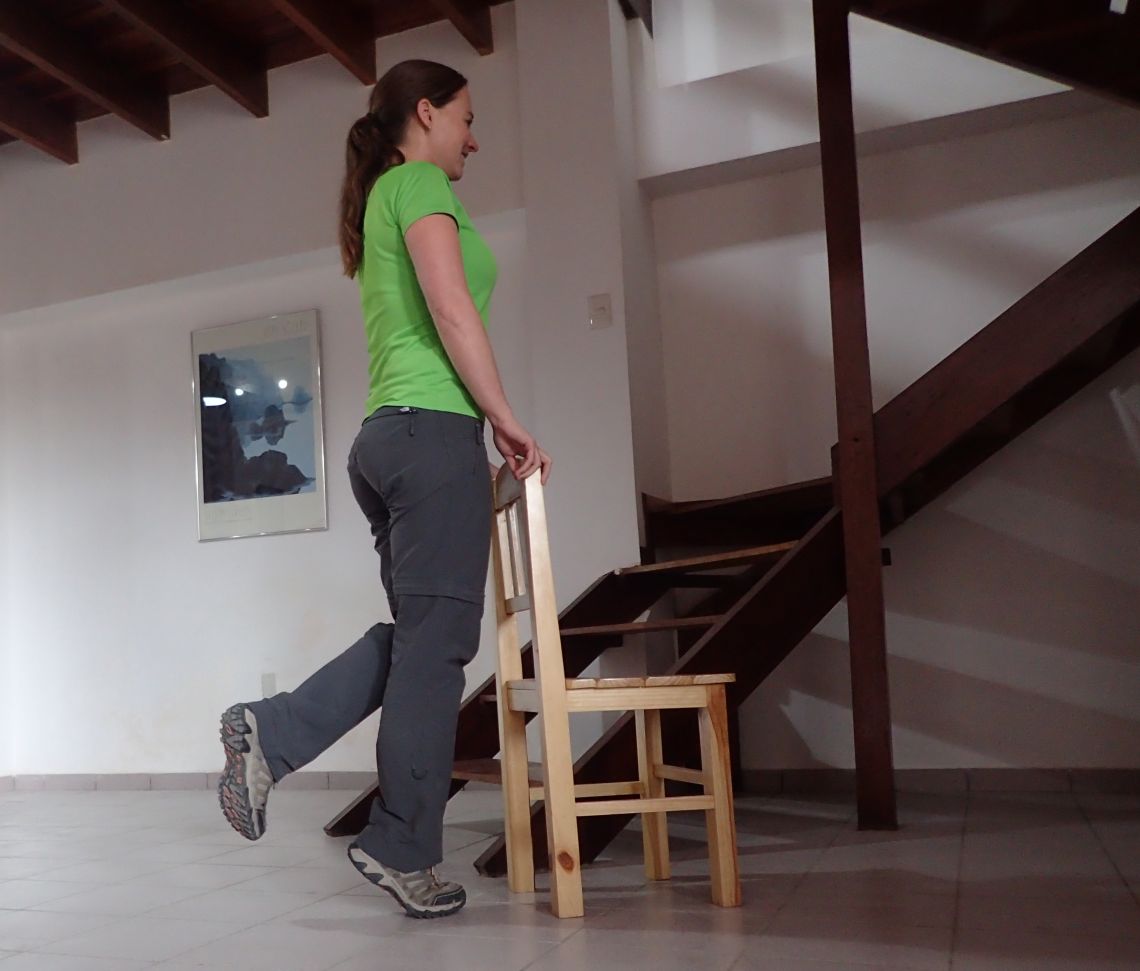
Exercise Two (Active people/progression from Exercise one) – perform every other day.
Stand on a step with your forefoot on the step and your heels over the edge. Slowly lift up onto your toes, hold 2-3 seconds then lower over a period of 5 seconds as far as comfortable. Use both legs to start and then progress to just doing this on your ‘bad’ leg – you may be able to do this straight away, see how you feel.
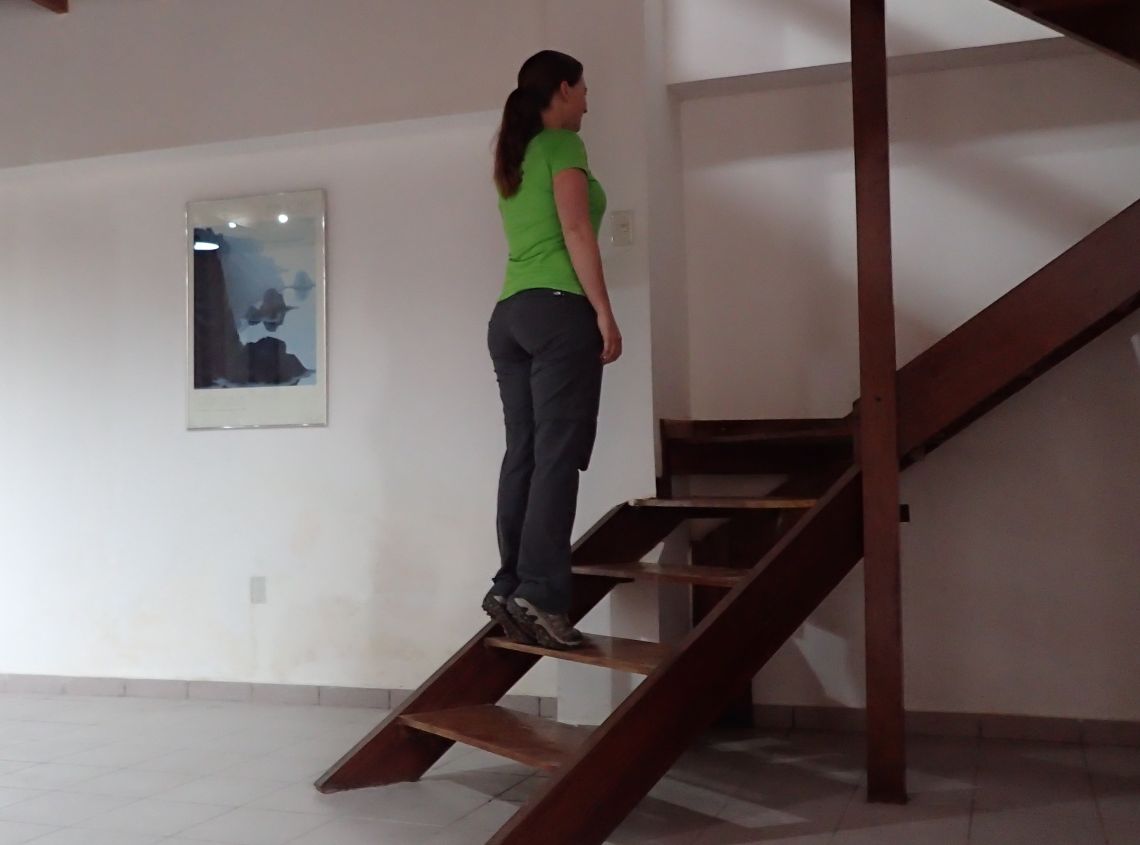
Do this for 8 to 12 repetitions with your leg straight, rest for 90 seconds and repeat, rest 90 seconds, repeat (active people). For sedentary people (couch dwellers), start with completing 8 to 12 reps, once, three times a day (5-6 hours in between) before doing three sets all in one go.
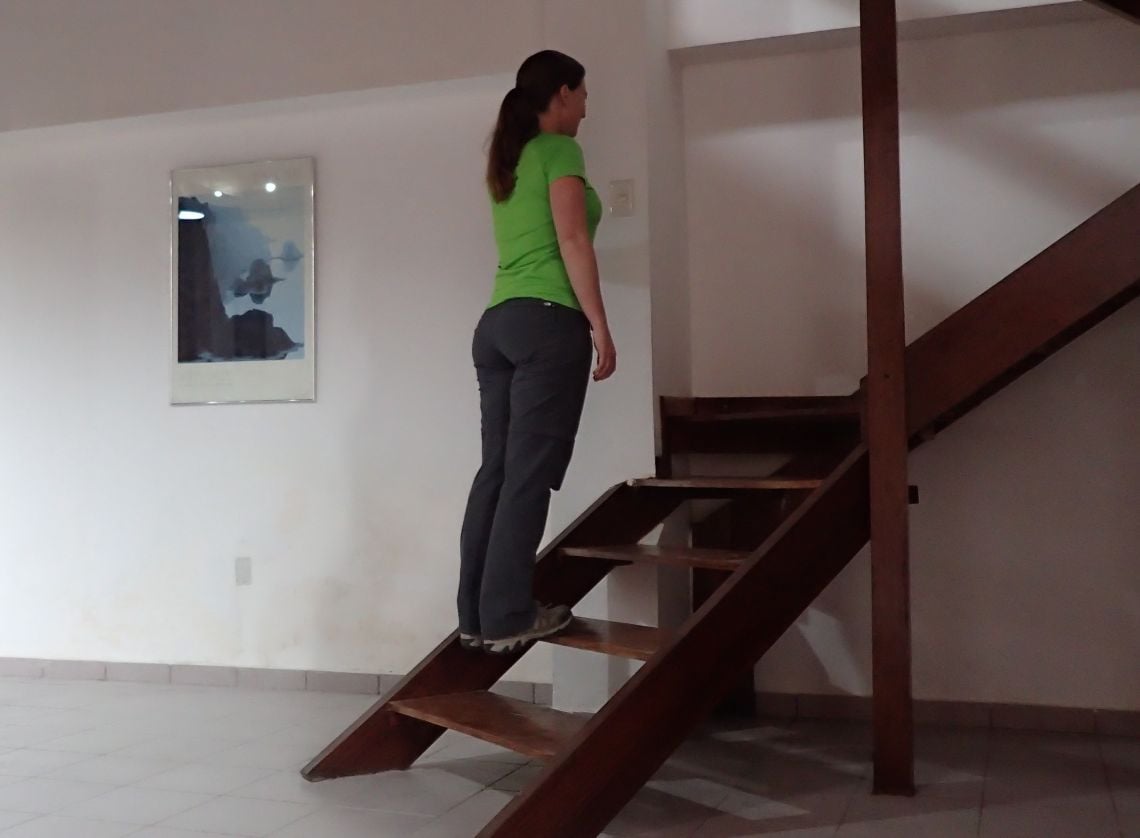
Then do the same exercise but with your knee bent. If 12 reps x 3 repetitions is far too easy and not causing you much discomfort, move on to exercise three.
Exercise Three (Progression) – perform 2-3 times a week only.
Once you can repeat exercise two every other day for two weeks, without suffering ‘flare-ups’ afterwards (above 6-7/10 pain) and causing you debilitating symptoms or reduction in function, increase the load (e.g. put a backpack on your back loaded with some weight). Repeat 8 to 12 repetitions x 3 sets.
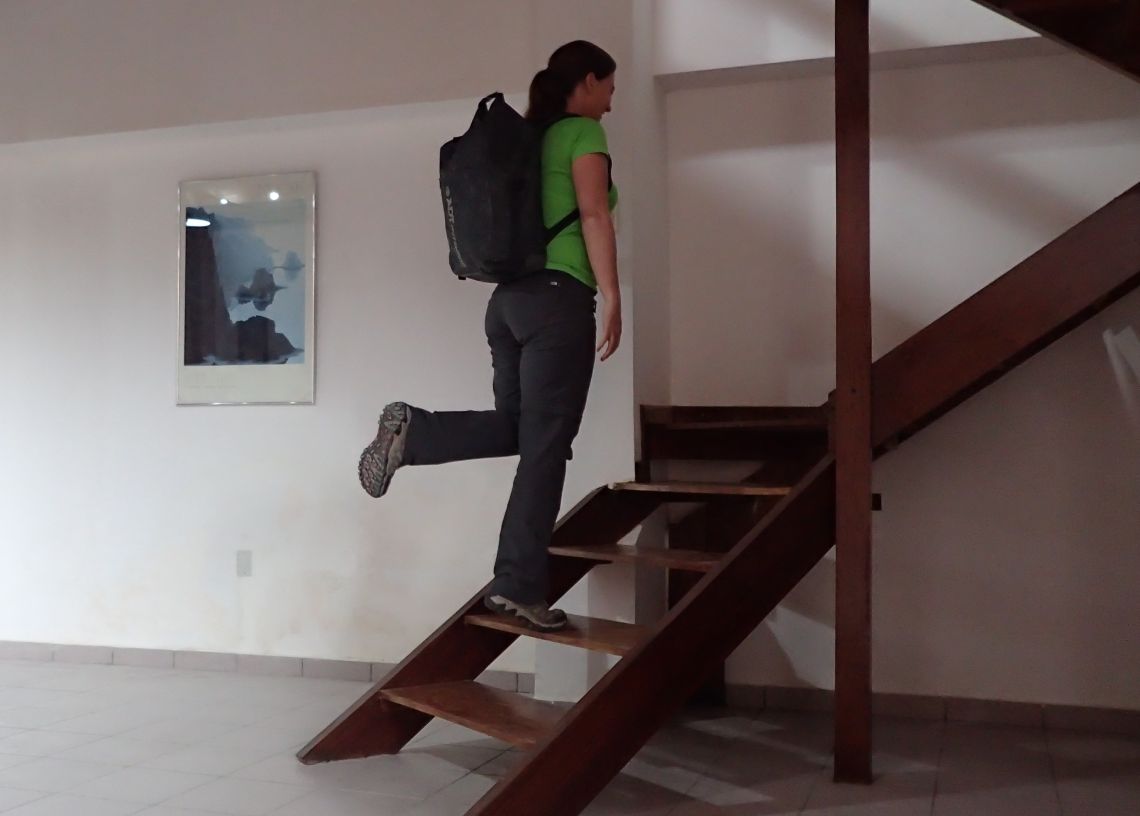
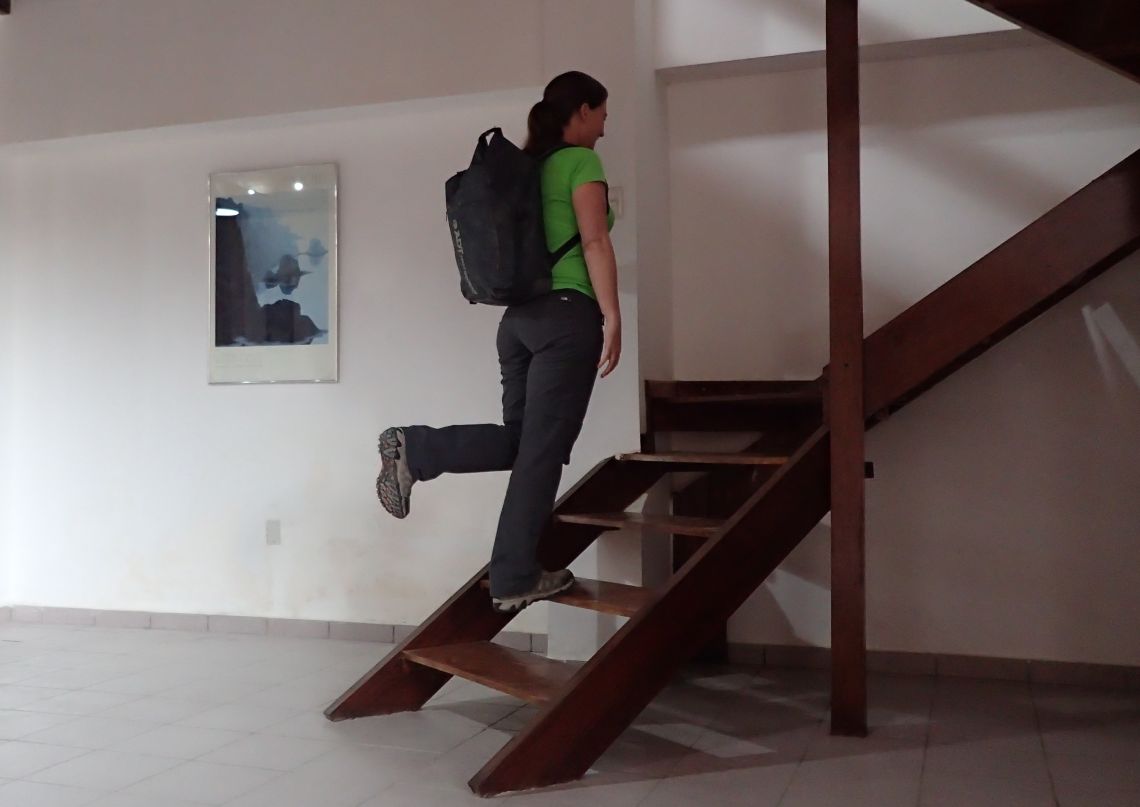
Ideally, increase this slowly over time to up to 50% of your body weight, especially if you’re a keen off-road rider or participate in any other physical activity. So, if you weigh 70kg, you want to be aiming to have up to 35kg in your backpack. Bear in mind, rehabilitation can take 3-6 months or more, so do not rush it, this can cause rehabilitation failure.
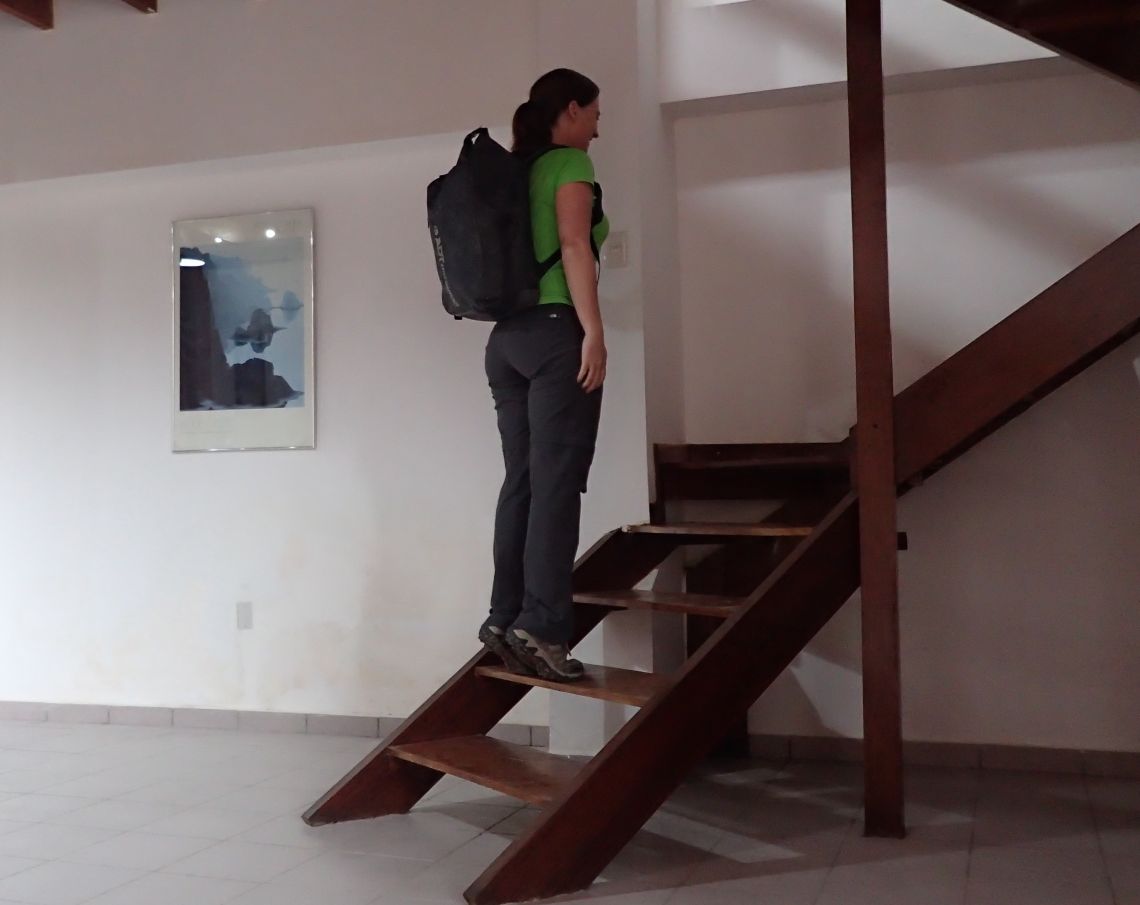
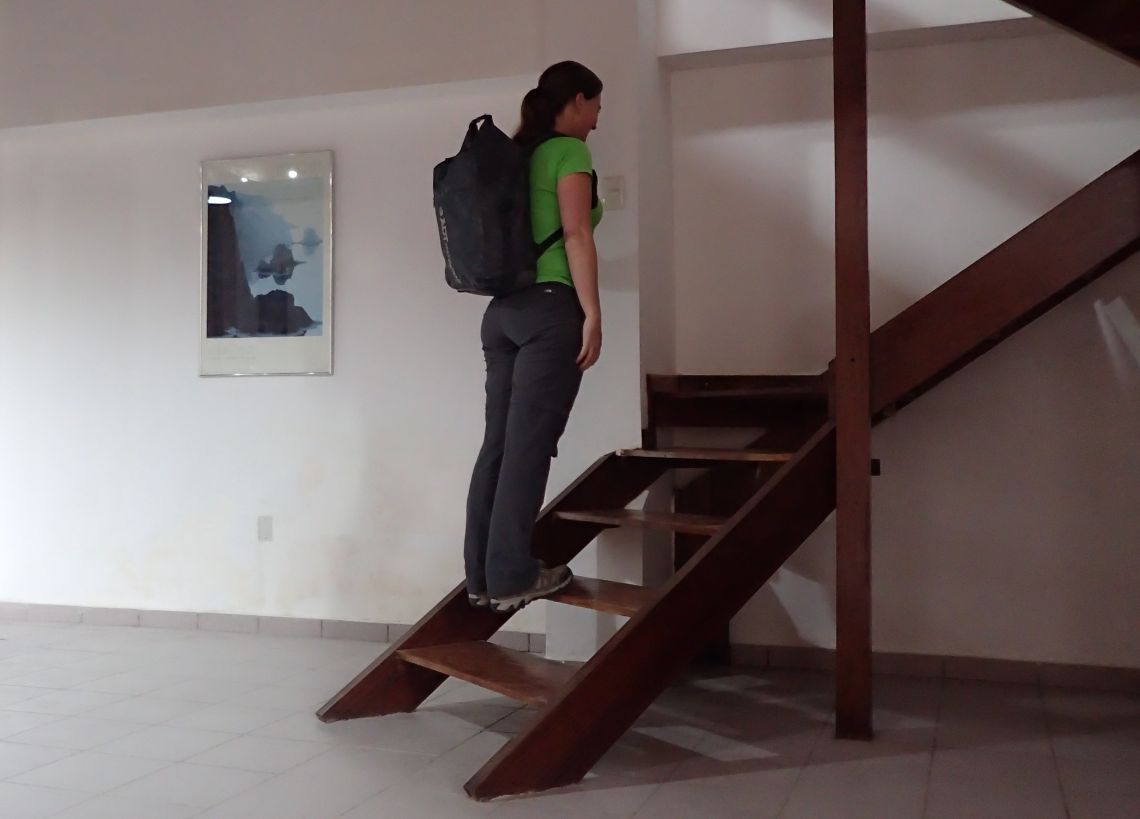
Builder’s sand is cheap and you can buy 25kg bags from local builder’s merchants, so it’s an easy way to load your backpack.
Be careful if you have any neck, shoulder or back problems.
If you ride off-road and often have your foot rotated (feet pointing out a little) or in another position, do the above exercises with your foot in this position as well.
Other advice
- Use wide footpegs for off-road riding to reduce bend or arching in your foot and prevent your ankle rolling out too much.
- Boots with good support in the ankle and sole can make a huge difference. Invest in a decent pair of boots that don’t over flex and keep your foot in a good position throughout the day.
If you’ve had your boots for years and they are getting very supple, consider an upgrade. - If your pain and function are not improving you should really see a qualified physiotherapist to assess you thoroughly to work out what’s best for you, especially if you are over the age of 65.
- Always see a physiotherapist for assessment if you have other physical conditions, or a doctor if you have any medical conditions, prior to starting a new exercise regime.
For a video showing exactly how to perform these movements, head to www.bit.ly/ABRachilles and for a full list of references or questions please email: suzie@overlanderhealth.com

